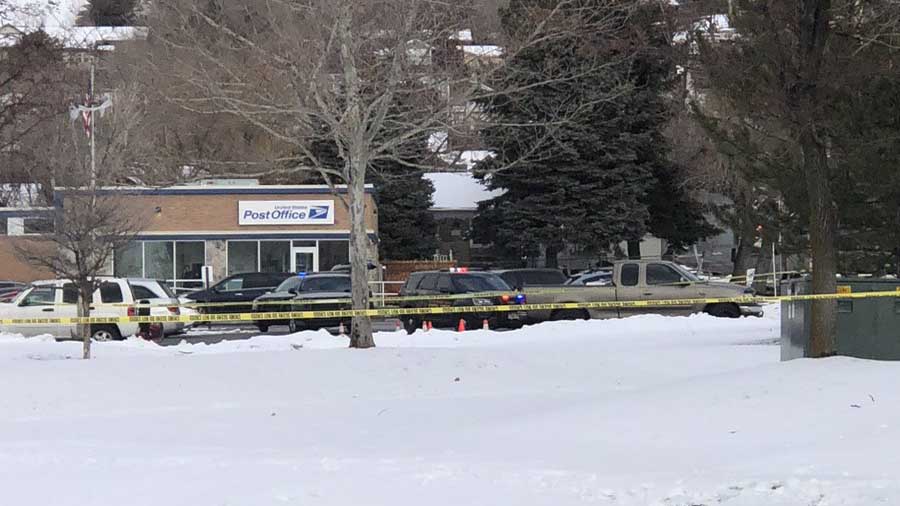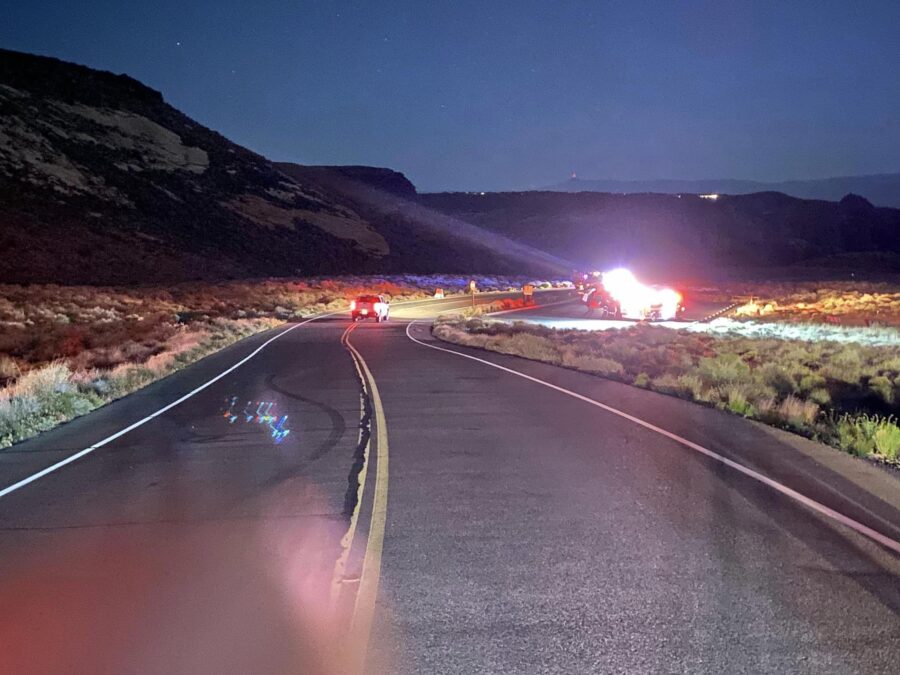What’s policy on turning off body cameras? Farmington police response timeline
Mar 3, 2023, 3:29 PM | Updated: 3:38 pm

Police released limited new details about a traffic stop-turned-deadly officer-involved shooting as those close to the incident reacted Thursday. (KSL TV)
(KSL TV)
FARMINGTON, Utah — When police shot and killed 25-year-old Chase Allan, after a traffic stop on Wednesday, police turned off their body cameras after five minutes.
Police are allowed to turn off their body cameras, but by Davis County policy, there’s a strict protocol for when that can happen. Shots were fired at 3:26 p.m., medical was requested at 3:27 p.m., and by 3:32 p.m. the call goes out, “In the scene you can go ahead and kill your body cams.”
KSL TV recorded the scanners from March 1, and reviewed the audio to find the following timeline of events:
3:26:58 p.m.
“We got shots fired, shots fired”
3:27:06 p.m
“We have shots fired, suspect down, and there’s more”
3:27:34 p.m.
“We’re Code 4, can we get medical”
3:29:18 p.m.
“Send ‘em in, we’re doing chest compressions”
3:32:03 p.m.
“In the scene you can go ahead and kill your body cams”
3:46:46 p.m.
“Can we just make sure all the body cams have been shut off”
3:47:02 p.m.
“Can we make sure all the body cams have been shut off now”
What’s the policy?
In Davis County, the policy on body worn cameras is that they can be turned off after the case has been sent to the county attorney’s office and investigators are assigned. The investigators assigned to the incident can then make the call to shut off body cameras once they’re on scene.
Davis County Officer-Involved Critical Incident Protocol outlines this specific protocol stating:
“Once the protocol has been invoked, the Davis County Investigative Bureau Chief, Operations Section Chief, or Lead Investigator, when on scene, may direct that all running dash and body cameras shut off. This is done to prevent hours of video with no evidentiary value that will later have to be fully reviewed by Protocol Investigators.”
The Lead Investigator, in this case, is Bountiful City Police Department, assigned as the independent investigator.
Farmington City has its own policy for when body cameras can be turned off by officers. That policy follows what state lawmakers have spelled out in Utah’s state code, which can be for a variety of reasons listed below.
“An officer may deactivate a body-worn camera:
(a) to consult with a supervisor or another officer;
(b) during a significant period of inactivity;
(c) during a conversation with a sensitive victim of crime, a witness of a crime, or an individual who wishes to report or discuss criminal activity if:
(i) the individual who is the subject of the recording requests that the officer deactivate the officer’s body-worn camera; and
(ii) the officer believes that the value of the information outweighs the value of the potential recording and records the request by the individual to deactivate the body-worn camera; or
(d) during a conversation with a victim of a sexual offense, as described in Title 76, Chapter 5, Part 4, Sexual Offenses, or domestic violence, as defined in Section 77-36-1, if:
(i) the officer is conducting an evidence-based lethality assessment;
(ii) the victim or the officer believes that deactivating the body-worn camera recording:
(A) will encourage complete and accurate information sharing by the victim; or
(B) is necessary to protect the safety or identity of the victim; and
(iii) the officer’s body-worn camera is reactivated as soon as reasonably possible after the evidence-based lethality assessment is complete.”
When asked about this shooting, Farmington Police Chief Eric Johnsen told KSL TV that the protocol is to turn them off so they don’t have hours of footage to review once the scene is secure.












